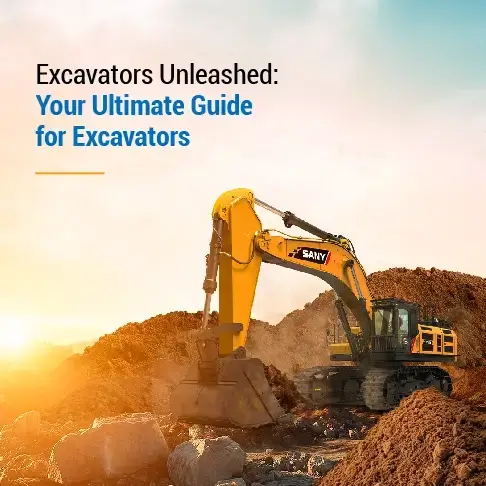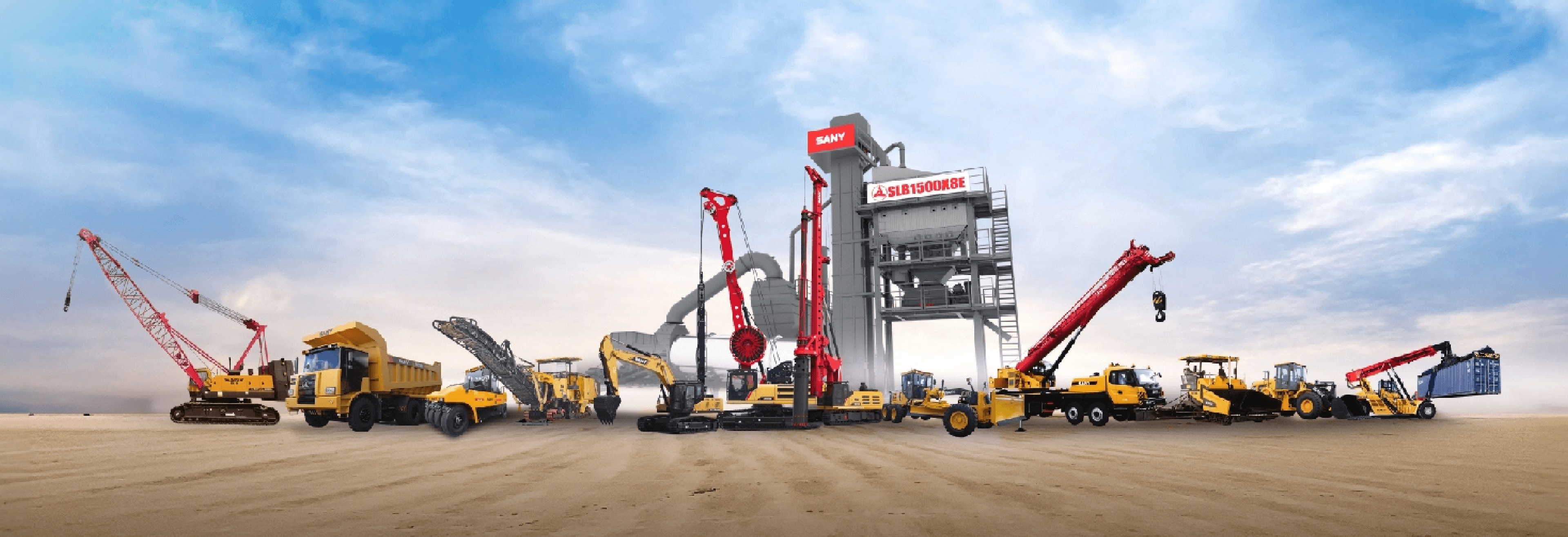A Comprehensive Guide To Excavation Machines
Category: Excavators | 09 April 2024

Heavy machinery plays a vital role in executing projects in various industries, and excavators are among the most popular of these machines. They are the workhorses of the construction industry, capable of digging, lifting, and moving massive amounts of earth with precision and efficiency. From small-scale landscaping projects to large-scale construction sites, excavators play a vital role in shaping the world around us. In this blog, we'll learn more about excavators, exploring their various types, applications, and the latest advancements in excavation machinery.
The Mechanism Behind Excavators
To understand excavators, it is necessary to understand their working mechanism, which relies on powerful arms and hydraulic systems.
Hydraulic Systems
The hydraulic system is the powerhouse behind the excavator's exceptional power and precision, enabling it to perform many tasks efficiently. Key components of this hydraulic system include:
- Hydraulic Pump: The hydraulic pump pressurises hydraulic fluid, typically oil, to drive various excavator parts. It generates the force necessary for the machine's movements.
- Cylinders: These act as the excavator's muscles, facilitating movement in its arms, buckets, and booms. Hydraulic fluid pumped into these cylinders creates formidable force, allowing precise manoeuvrability of heavy equipment.
- Valves: Functioning as the control centre, valves regulate the flow of hydraulic fluid to different cylinders, ensuring precise control over the machine's functions. Operators can adjust valves to control speed, direction, and force, enhancing operational flexibility.
Powerful Arms
The arms of an excavator machine represent the machine's strength and agility. They enable excavators to dig deep into the earth or hoist heavy objects effortlessly. Key features of excavator arms include:
- Articulated Structure: Comprising multiple joints, excavator arms offer flexibility and mobility, allowing for a wide range of movements. Each joint is equipped with hydraulic cylinders, ensuring robustness and precision in operation.
- Versatility: Excavator arms can be outfitted with various attachments, such as buckets or grapples, to accommodate diverse tasks like excavation, trenching, or lifting. The hydraulic cylinders within the arms enable operators to execute delicate manoeuvres or forceful actions as needed.
Excavators: Types And Functions
Excavators come in various types, each designed for specific tasks and environments.
Mini Excavators (Compact Excavators)
Mini excavators, ranging from 1 to 8 tons, are versatile machines ideal for navigating tight spaces due to their compact size.
- Versatile machines capable of performing various tasks, including trenching, landscaping, and utility work.
- Suited for small-scale projects and urban environments where space is limited.
- Commonly used in residential construction, landscaping, and utility installation.
Crawler Excavators
Crawler excavators, ranging from 10 to 90 tons or more, are designed for heavy-duty digging and lifting operations on construction sites.
- Equipped with tracks (crawlers) instead of wheels for enhanced stability and traction.
- Suitable for challenging terrain conditions such as rough terrain, slopes, and uneven surfaces.
- Often utilised in large-scale construction projects, road-building, and mining operations.
Wheeled Excavators
Wheeled excavators, ranging from 10 to 50 tons, feature wheels instead of tracks, providing greater mobility and speed. They are:
- Well-suited for urban construction sites and road maintenance projects where frequent movement is required.
- Offers versatility in transportation, as they can be easily driven on roads between job sites.
- Equipped with outriggers or stabilisers to maintain stability during digging and lifting operations.
Long Reach Excavators
Long-reach excavators, ranging from 10 to 100 tons, are designed with extended reach arms and booms for reaching deeper or higher areas.
- Ideal for dredging, riverbank maintenance, and excavating foundations for tall structures.
- Provides enhanced flexibility and efficiency in handling projects with specific reach requirements.
Amphibious Excavators
Amphibious excavators, ranging from 3 to 36 tons, are specifically designed for working in wetland areas, marshes, or shallow water bodies.
- Equipped with pontoons or floatation devices to ensure buoyancy and stability on water surfaces.
- Used for applications such as dredging, environmental restoration, and shoreline construction.
Backhoe Loaders (Backhoes)
Backhoe loaders, ranging from 6 to 10 tons, combine the functionality of an excavator and a loader in a single machine.
- Features a digging bucket on one end (backhoe) and a loader bucket on the other end.
- Suitable for versatile applications such as digging trenches, loading materials, and excavating in confined spaces.
Industrial Excavator Applications
Excavators find applications across various industries, from construction and landscaping to mining and demolition.
Construction Industry
- Digging foundations, trenches, and site grading.
- Excavating for basement construction and underground structures.
- Clearing debris and rubble from construction sites.
Landscaping And Earthmoving
- Digging ponds, installing drainage systems, and shaping terrain.
- Clearing land for gardening, lawn installation, and outdoor spaces.
- Removing obstacles like stumps and rocks for land development.
Mining Industry
- Excavating ore bodies and removing overburden.
- Loading mined materials onto trucks or conveyors.
- Creating access roads and reclaiming mined areas.
Demolition Projects
- Tearing down structures and breaking materials.
- Sorting and clearing demolition debris.
- Preparing sites for redevelopment after demolition.
Advancements In Excavation Machinery
The field of excavation machinery is constantly evolving, with manufacturers introducing innovative features and technologies to improve efficiency, safety, and performance. Hydraulic systems have undergone significant advancements, allowing for smoother operation and better control of excavator movements. Automation and remote-control technologies are also becoming more prevalent, enhancing productivity and safety on construction sites. Moreover, manufacturers are increasingly focusing on sustainability, developing excavators with lower emissions and improved fuel efficiency.
Conclusion
Excavators are indispensable tools in construction and earthmoving, offering unmatched versatility and efficiency. Whether it's excavating foundations or demolishing structures, there's an excavator for it. By understanding excavators, their different types, and applications, you can make informed decisions to ensure the success of your projects.
Choosing the right excavator is also crucial for the success of any project. Sany, a leading manufacturer of construction machinery, offers a wide range of excavators designed to meet the diverse needs of contractors and construction professionals. With innovative features, superior performance, and a commitment to quality, we are trusted by customers worldwide. Explore our range of excavators to find the perfect machine for your next project.




